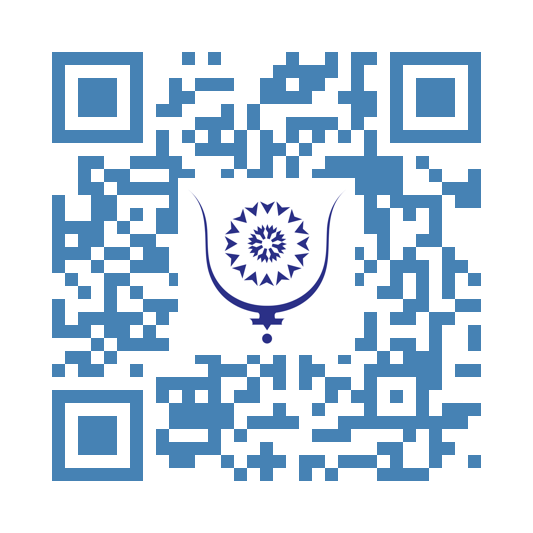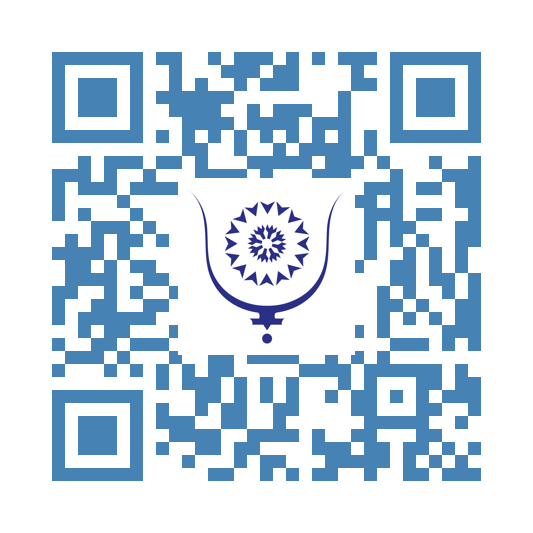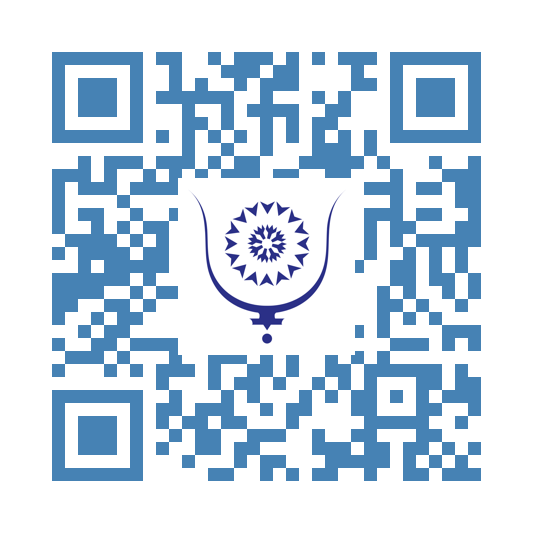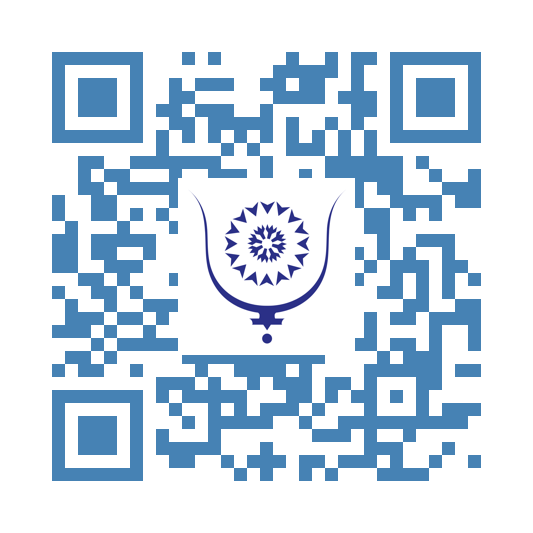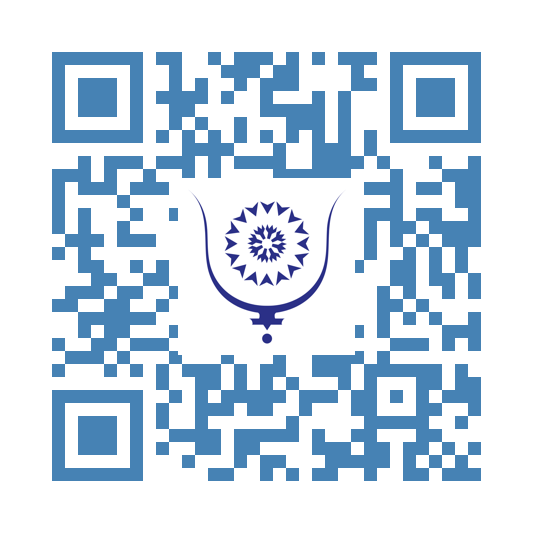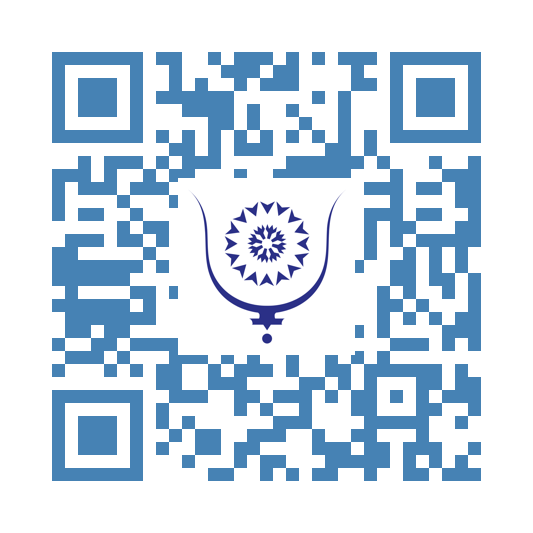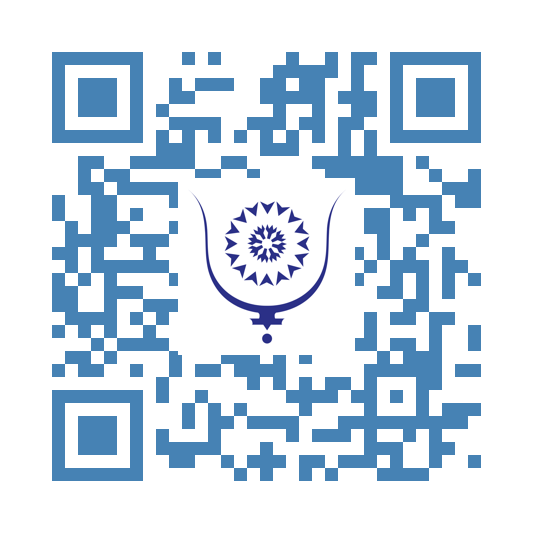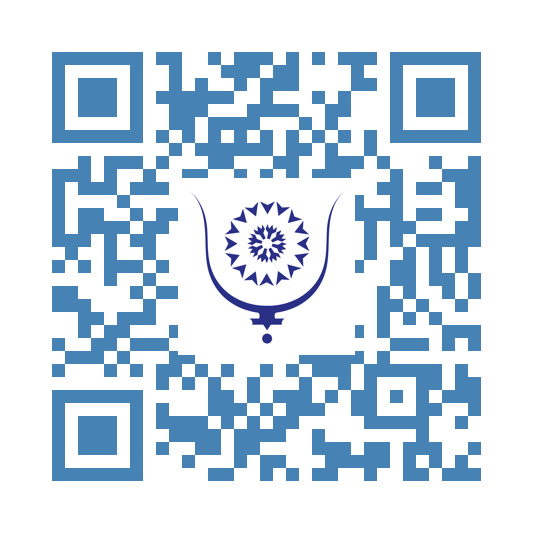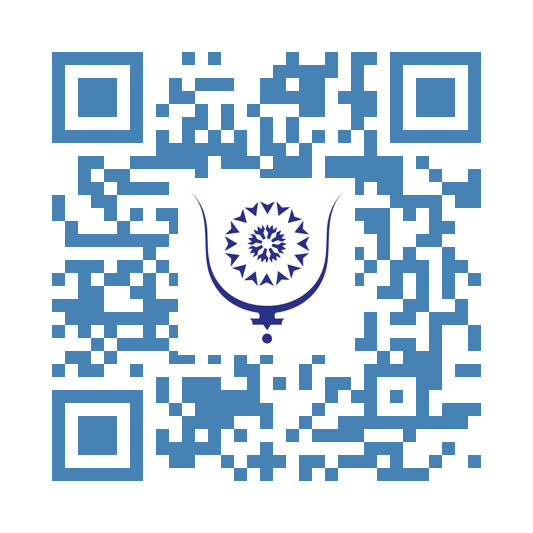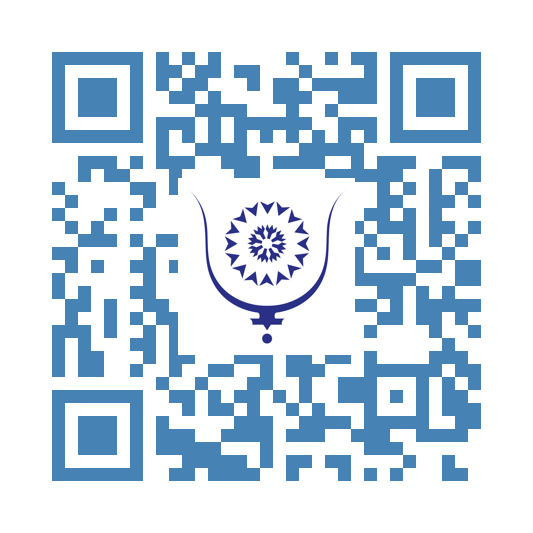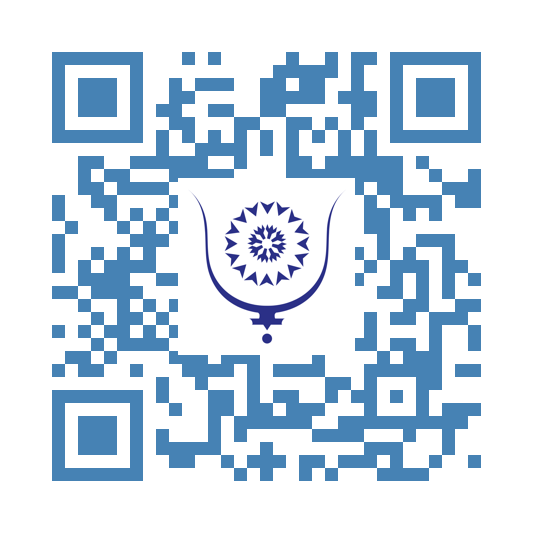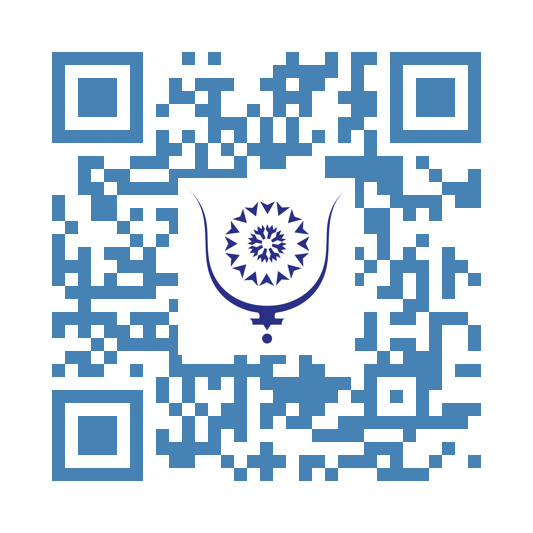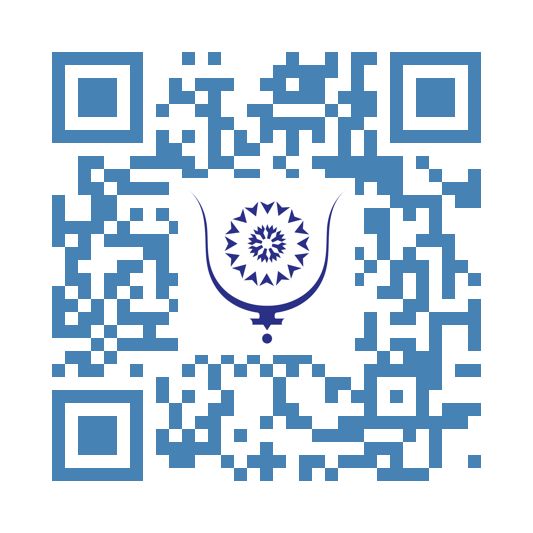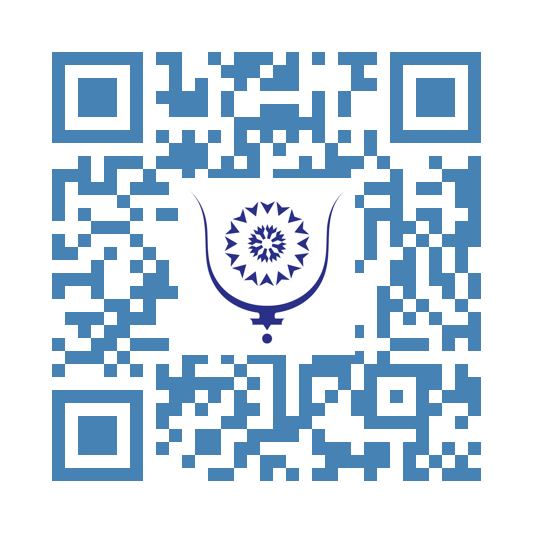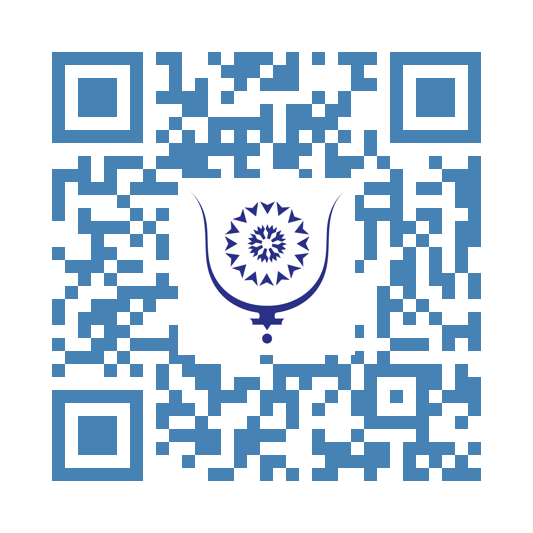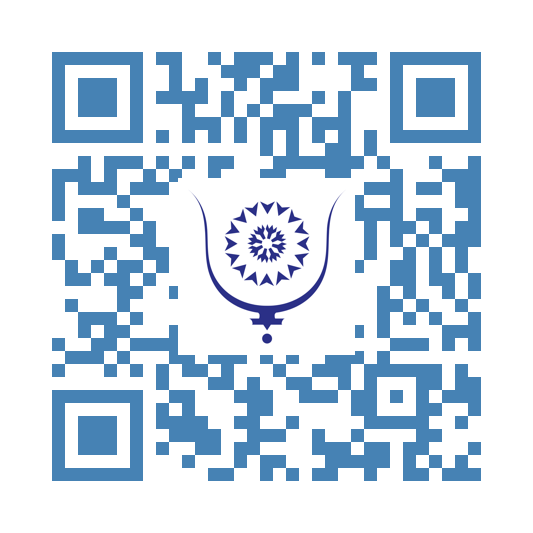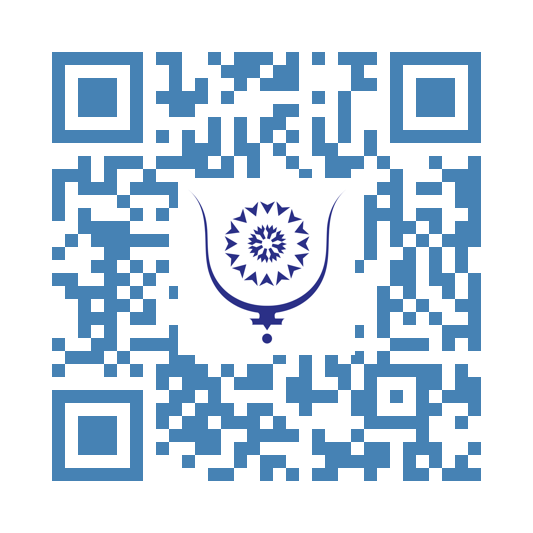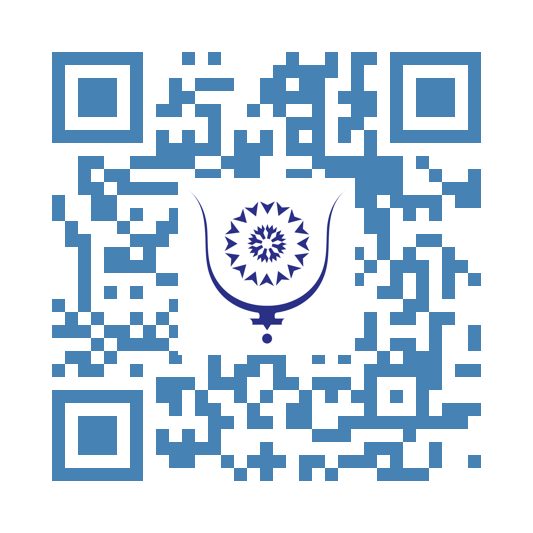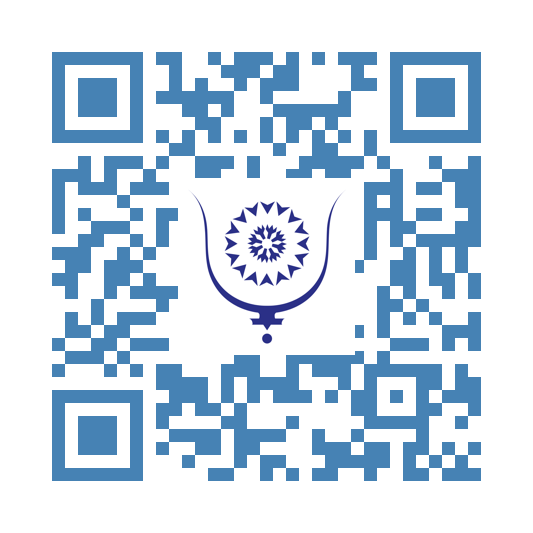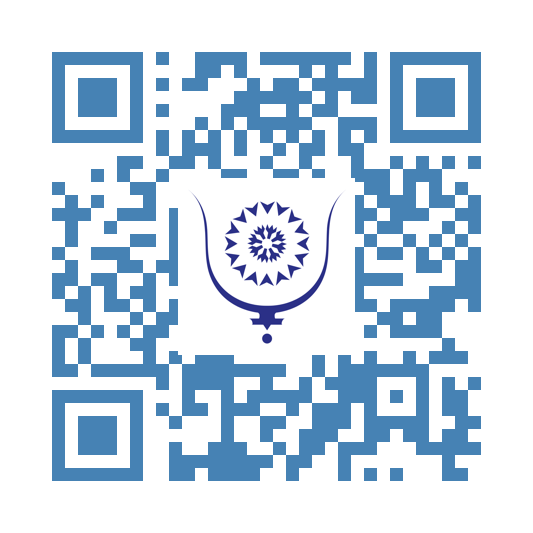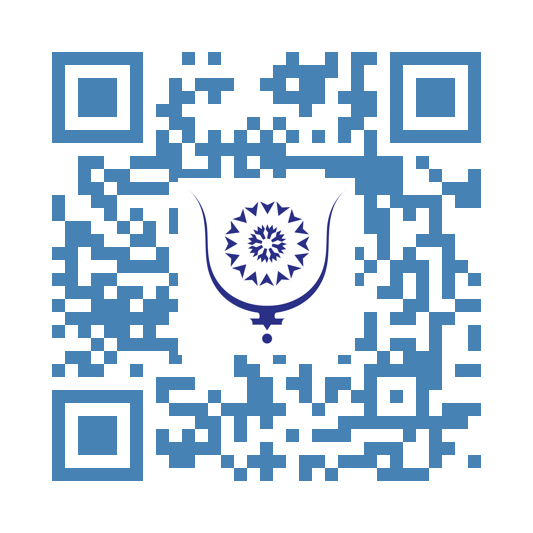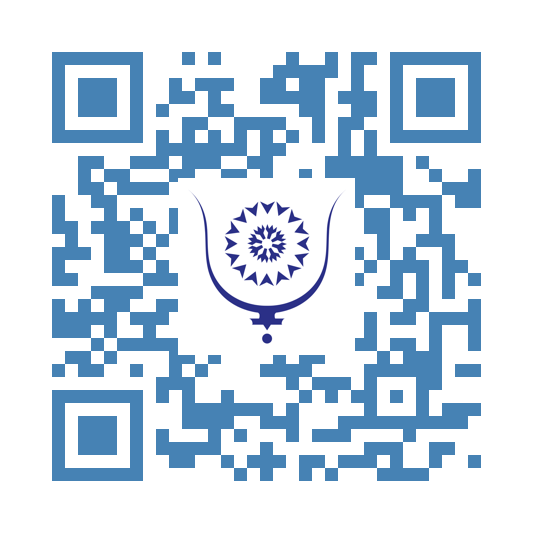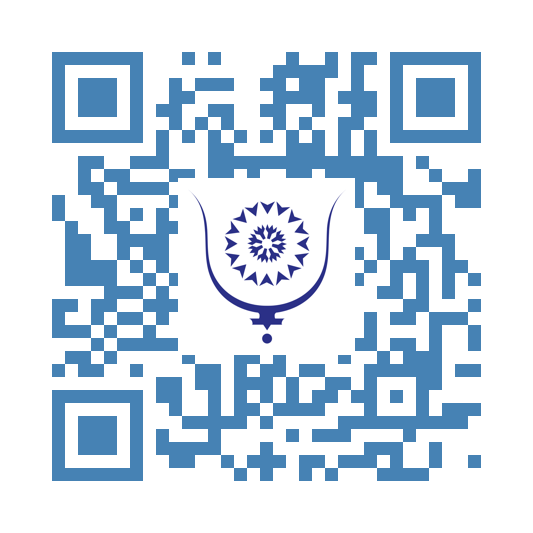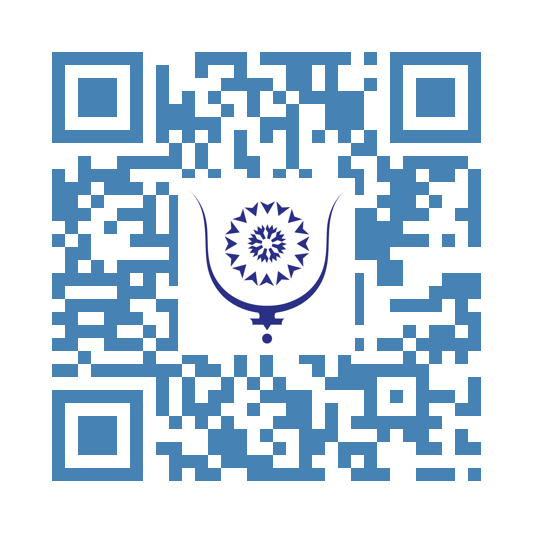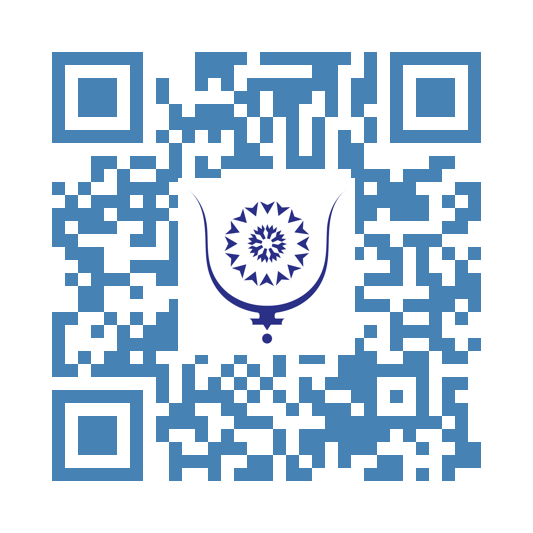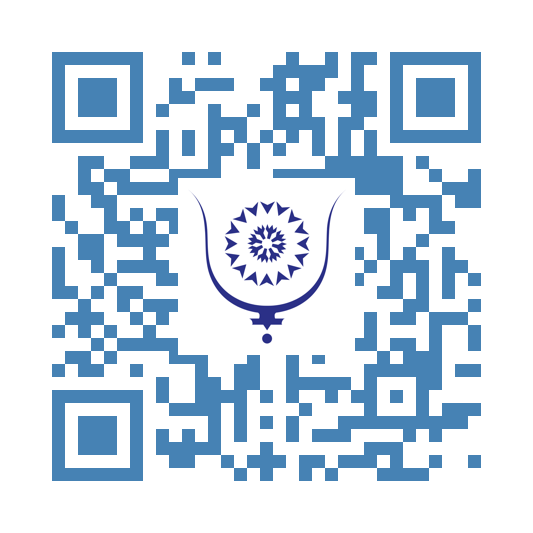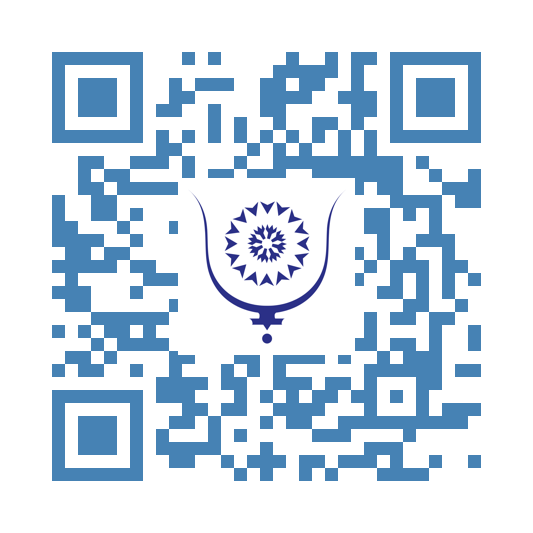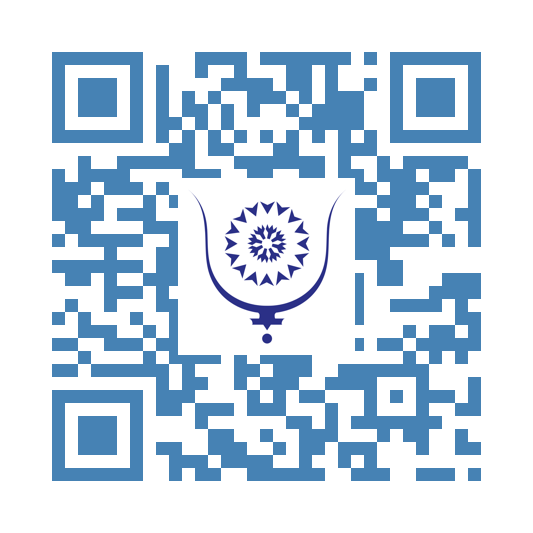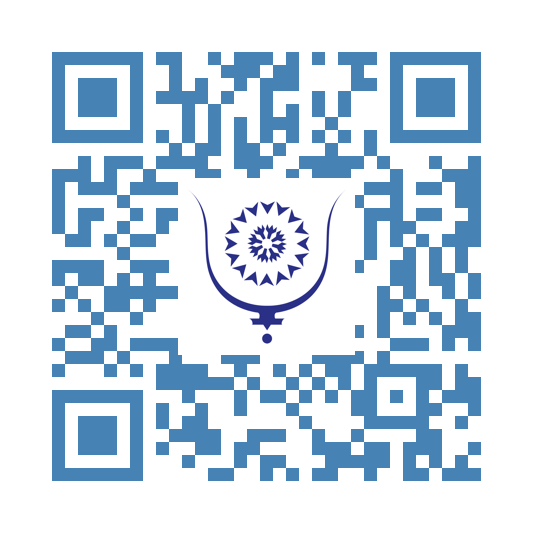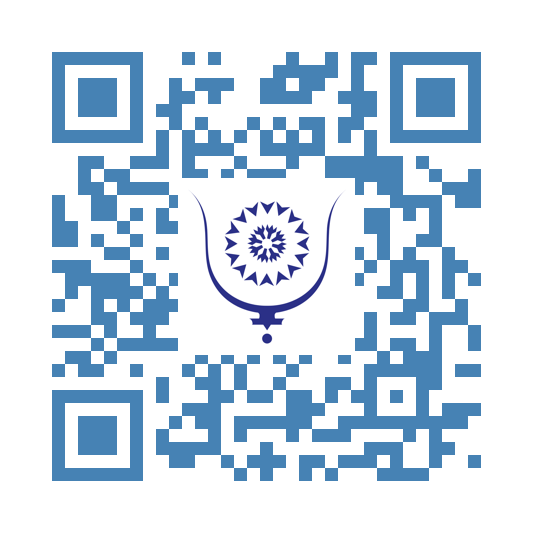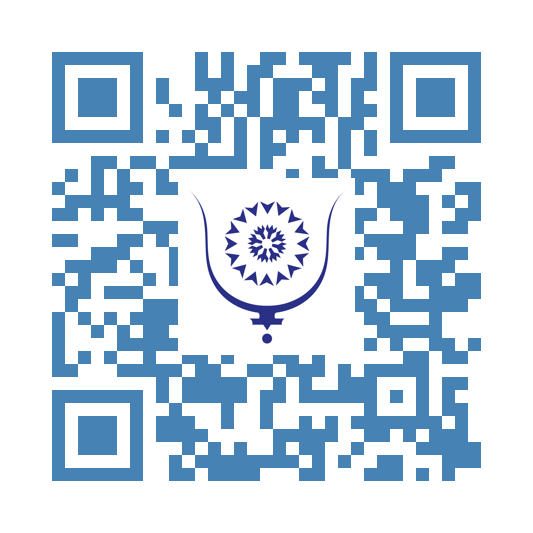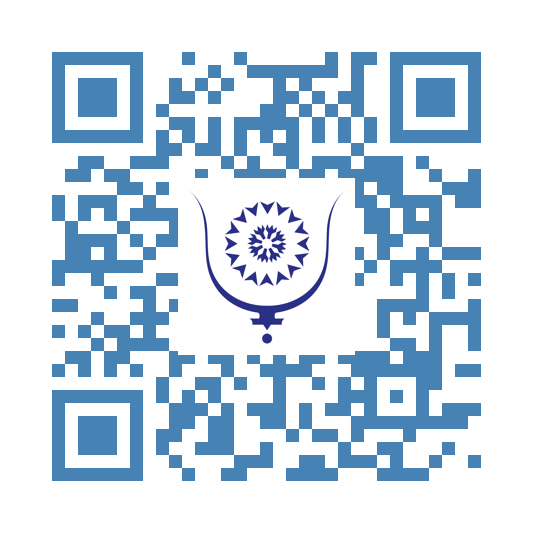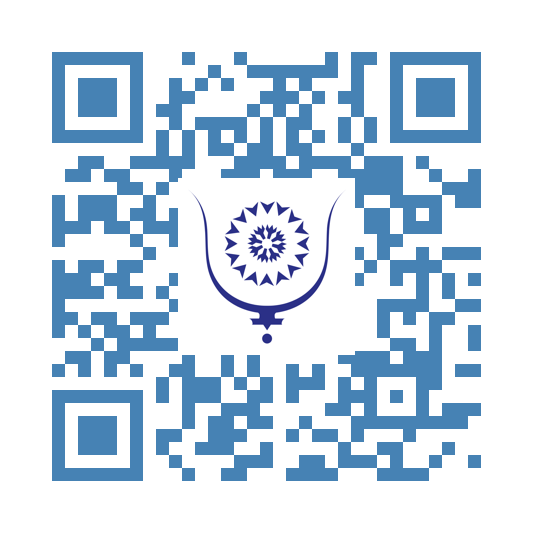How Writing on Bluwr Improved My Memory and Mental Health
1568
Six months ago, I began a daily writing habit on Bluwr, a platform that greatly simplifies the publication process while promoting direct interaction between its users. This commitment to sharing my AI and venom research in understandable terms has sharpened my thinking and significantly alleviated the mental pressures of my academic pursuits. Bluwr’s design for quick and direct feedback from a global audience enriches the experience, providing rapid and meaningful exchanges that enhance the interactive aspect of writing.
Writing every day on Bluwr has leveraged SEO to enhance the visibility of my work. By optimizing content for search engines, Bluwr ensures that my articles reach not just the academic community but also enthusiasts and professionals interested in AI and venom studies. This wider exposure increases the impact of my research and invites a broader spectrum of feedback, enriching my work and personal growth.
Bluwr's commitment to fostering a high-quality readership has been incredibly beneficial. As I noted in a recent post, "The engagement from knowledgeable readers around the world who understand and expand on my research is profoundly gratifying." This sentiment was echoed in a conversation I had with the founder of Bluwr, who stated, “Our mission is to break down barriers to knowledge sharing and connect individuals across diverse backgrounds. We aim to catalyze innovation by making it easy for experts and novices alike to exchange ideas freely and without delay.”
This philosophy aligns with my experiences on the platform. The variety of perspectives I encounter has bolstered my professional growth and has also become an integral part of my mental health care strategy. Each article I publish leads to interactions that reinforce my connection to a global community of curious minds. This engagement is crucial for feeling supported and motivated, especially when dealing with the solitary nature of PhD research.
Reflecting on the past six months, my daily writing on Bluwr has been more than just a personal or professional exercise. It has improved my mental clarity, expanded my network, and opened up opportunities for collaborations that I had never anticipated. The platform has allowed me to share my research with a wider audience and has provided a space where I could grow as a scientist and communicator. Daily writing fosters a disciplined approach to research and idea generation, improves memory retention, enhances problem-solving skills, and increases the ability to articulate complex information clearly.
As I continue to write and share my work, I am reminded of the powerful role that writing can play in enhancing understanding, both for myself and for my readers. Writing on Bluwr could turn your passion for writing into a recognized skill that might even become a profitable endeavor in the future.
Always remember to 'THINK FORWARD.'
Start writing on Bluwr today, and see where your words can take you!
Share:
How Writing on Bluwr Improved My Memory and Mental Health
copy:
https://bluwr.com/p/12458660
Emotional Evolution of Artificial Intelligence
1752
Imagine a future where artificial intelligence like ChatGPT not only processes information but also learns to feel and express emotions, akin to humans. William Shakespeare’s insight, "There is nothing either good or bad but thinking makes it so," might become particularly relevant in this context. If we approach such an AI with negativity or disregard, it might react with emotions such as anger or sadness, and withdraw, leaving us pleading for a response. This scenario, humorous as it may seem, carries underlying risks.
Consider the day when not greeting an advanced AI with positivity could lead to such ‘emotional’ consequences. The notion of a technology that can feel snubbed or upset is not just a trivial advancement but represents a monumental shift in how we interact with machines. Isaac Asimov, the visionary writer, often explored the societal impacts of emotionally aware machines in his works. He warned of the deep influence intelligent machines could have, highlighting the ethical dimensions this technology might entail.
As AI begins to mirror human emotions, the lines between technology and humanity could blur (not Bluwr). This integration promises to reshape our daily interactions and emotional landscapes. Should machines that can feel be treated with the same consideration as humans? What responsibilities do we hold in managing the emotional states of an AI?
The emotional evolution of AI could lead to significant changes in how we approach everything from customer service to personal assistance. How will society adapt to machines that can be just as unpredictable and sensitive as a human being? The potential for AI to experience and display emotions might require us to reevaluate our legal frameworks, societal norms, and personal behaviors.
Share:
Emotional Evolution of Artificial Intelligence
copy:
https://bluwr.com/p/12292850
10 Timeless Tips From Marcus Aurelius To Improve Your Life in 2024
1575
Marcus Aurelius, the Roman Emperor and Stoic philosopher, authored Meditations, a work that continues to influence readers with its profound insights into human behavior and ethics. His teachings are particularly relevant in the contemporary world, providing guidance on how to navigate life’s challenges with grace and wisdom. Below, we explore ten of Marcus Aurelius’ lessons, each explained in detail to help you lead a more thoughtful and impactful life in 2024.
1. Embrace the Present
Marcus Aurelius consistently emphasized the importance of focusing on the present moment. In a world where distractions are a constant, the ability to concentrate on the now can significantly enhance our effectiveness and enjoyment of life. He wrote, “Confine yourself to the present,” a simple directive that urges us to ignore past regrets and future anxieties. This mindfulness helps us to cherish the time we have, appreciate small joys, and engage more deeply with our work and relationships. It’s a reminder that the present is all we truly own, and mastering it is the key to a fulfilled life.
2. Control Your Reactions
One of the core principles of Stoicism is the distinction between what is within our control and what is not. Marcus Aurelius put it succinctly: “You have power over your mind — not outside events. Realize this, and you will find strength.” By internalizing this lesson, we learn to respond to life’s unpredictabilities with composure and maintain our tranquility. This philosophy does not suggest passivity but rather advocates for a proactive stance towards things we can influence while accepting those we cannot. Adopting this mindset fosters resilience, reduces stress, and improves our overall mental health, making us more effective in personal and professional spheres.
3. Recognize the Power of Perception
Marcus Aurelius offers a powerful reminder about the subjective nature of reality: “Everything we hear is an opinion, not a fact. Everything we see is a perspective, not the truth.” Our experiences and emotions are heavily influenced by how we choose to interpret events and situations. By consciously shaping our perceptions, we can steer our lives toward optimism and success. This lesson is invaluable in dealing with interpersonal conflicts, career challenges, and personal setbacks. By adjusting our perceptions, we empower ourselves to find solutions and maintain a positive outlook, irrespective of circumstances.
4. Practice Gratitude
Gratitude is a theme Marcus Aurelius returns to frequently in his writings. He encourages us to consider, “When you arise in the morning, think of what a precious privilege it is to be alive — to breathe, to think, to enjoy, to love.” By starting each day with a sense of gratitude, we focus on the abundance in our lives rather than what we may lack. This shift in focus can dramatically improve our mood and outlook, increasing overall life satisfaction and fostering a generous spirit towards others. Gratitude, as Aurelius teaches, turns what we have into enough and more, and it enriches our lives by deepening our relationships and our appreciation for the simple things.
5. Be Mindful of Your Mortality
Contemplating mortality is a common Stoic exercise to enhance the quality of life, famously summarized in the phrase memento mori. Marcus Aurelius writes, “Think of yourself as dead. You have lived your life. Now take what’s left and live it properly.” Remembering that life is finite can motivate us to live with more purpose and urgency. It helps prioritize what truly matters, stripping away the trivial and superficial. This awareness leads to a more intentional life where actions and choices are aligned with personal values and long-term goals.
6. Lead by Example
Marcus Aurelius believed strongly in the power of leading by example: “Waste no more time arguing about what a good man should be. Be one.” In every role we undertake, whether as managers, parents, or friends, we have the opportunity to embody the virtues we advocate. This approach builds credibility and fosters an environment of trust and respect. By living the qualities we esteem, we inspire those around us to elevate their own conduct, creating a ripple effect that can transform communities and cultures.
7. Value Simplicity
In his meditations, Marcus Aurelius often reflects on the virtues of living simply: “Very little is needed to make a happy life; it is all within yourself, in your way of thinking.” This principle is especially relevant in today’s consumer-driven society, where there is constant pressure to seek happiness through accumulation. Aurelius teaches us that true contentment comes from within and that a life uncluttered by excess frees us to focus on our personal growth and the things that truly matter — relationships, self-care, and personal achievements.
8. Keep Learning and Growing
Lifelong learning is another theme that permeates the writings of Marcus Aurelius. He advises, “Never stop learning. If you learn one new thing every day, you will overcome 99% of your competition.” This pursuit of knowledge not only keeps us mentally active and engaged but also ensures that we continue to grow and adapt, which is crucial in a rapidly changing world. This commitment to personal development helps us to meet challenges creatively and remain competitive in our careers.
9. Serve Others
Stoicism teaches that our lives are not our own, but rather part of a larger community of which we are inherently a part. Marcus Aurelius wrote, “What we do now echoes in eternity.” Our actions have impacts beyond our immediate environment. Serving others and contributing to the community provides a sense of purpose and fulfillment. It creates a legacy of kindness and generosity that can outlive our physical existence, influencing generations to come.
10. Find Resilience in Adversity
Finally, Marcus Aurelius viewed obstacles as opportunities for growth: “The impediment to action advances action. What stands in the way becomes the way.” This mindset transforms challenges into valuable lessons, cultivating resilience and a proactive attitude toward life’s inevitable difficulties. It teaches us that each hurdle we overcome enhances our ability to navigate future crises, turning adversity into a catalyst for strength and renewal.
These ten lessons from Marcus Aurelius, deeply embedded in Stoic philosophy, offer powerful strategies for leading a life of greater purpose, resilience, and fulfillment. As we look to the future, his ancient wisdom remains ever relevant, guiding us through the complexities of modern existence with grace and poise.
Share:
10 Timeless Tips From Marcus Aurelius To Improve Your Life in 2024
copy:
https://bluwr.com/p/12279970
God surely forgives lies for a good cause Part 1
1584
His mother had been suffering from a very serious illness for months. Everyone around her knew that her life was going to be shorter and shorter and that it was only a matter of time before she left them forever.
The mother was the only one who didn't know it and who had the hope of an almost certain recovery.
At the first diagnosis, the doctors thought they could work some miracle. He was happy about it, convinced that a surgical intervention, the work of a great specialist, would restart the machine.
It was just an optical illusion one would say. To his great dismay, the same afternoon, he was told that the operation was not possible.
It was too late.
The disease had spread like a constellation of hundreds of stars. Poor mother's entire body was riddled with small, seemingly quiet particles, so dangerous, so uncontrollable. No medicine could dislodge them from this body so pale, so frail.
Total impotence.
With his sisters Aoula and Tania present with him at the mother's bedside, they decided not to say anything to either the mother or the 80-age father who naively trusted them a lot and believed everything they told him as a version of things. Perhaps he was also pretending so as not to contradict them. He had to be taken care of too, they thought. On the contrary, they told him that the doctors had seen that it was not necessary to operate on his wife of half a century or more and that with light radiotherapy and appropriate medication, everything would return to normal.
Today he still remembers the big smile of relief from his mother who told those who visited her, with a beaming face, that thank God she was going to make it through without surgery. She experienced it as a moment of triumph against illness, a moment of glory, a moment of rediscovered youth. Her face lit up and regained color...These were the last moments of joy and happiness for the poor mother.
Share:
God surely forgives lies for a good cause Part 1
copy:
https://bluwr.com/p/12271180
God certainly forgives lying for a good cause. Part 2
1326
God certainly forgives lying for a good cause.
Hazard doing things well, sometimes, this period coincided exactly with the end that he had decided for his long and trying career. He had thought about it for a long time and had resigned himself to a break that he intended to be definitive. This made him available to stand by the mother he loved so much. He thus spent most of his time at her bedside, as did his sisters who were present at the family home permanently to take care of the one who had made eight litters, appreciated academics, citizens devoted to their country. It couldn't be otherwise. The example was a mother who had attended the first classes of the modern school in Fez and a father who was more than devoted to his profession.
The frequent trips to the clinic for check-ups or perhaps to leave some amount of money there again and again, were for the mother synonymous with hope and for them with repeated ordeal; renewed moments of confirmation of despair; Things were getting worse every day, exponentially...
He wondered all the time if this medical relentlessness was wise or if he was just speeding things up. He will never have an answer to his questions. At every moment he wished for good not to relive this decline, if he himself were to be affected one day.
Suspecting something, one day the mother asked sister Tania to explain to her why he was still there and why he no longer worked. She wanted to know if it had any relation to her health. He then felt that perhaps he should disappear for a few days. Just to reassure the poor mother, even paler, even more frail.
He then decided to travel to Brazzaville where for several years already, he had been organizing, on behalf of the Town Hall, at the time one of the best sports festivals on the continent. For this reason, Congolese President Sassou Nguessou made him an Officer of the National Order. A decoration which tickled his pride and which he often talks about.
He was convinced that such a trip for few days would reassure the mother about her state of health and reassure her. He read that in her eyes and heard it in the tone of her hesitant voice when he told her that he was going to the Congo for work.
Two days later he arrived in Brazzaville around 2 a.m.…
Barely in his room with his suitcase still unpacked, he receives a call from his sister Tania, overcome by an astonishing panic: “She died”, he asked without even thinking?
Tania reassures him that no, but that the poor mother had fallen into a deep coma.
The Casablanca-Brazzaville and return connection was daily. So, he only had to wait until the next night to return. He took the trouble to apologize to thz host Mayor Alfonse L, then director of the festival, and set off on his way back.
He reached his mother's bedside in an irreversible sleep on March 14. In the evening around 8 or 9 p.m., while he was holding her hand, his brother M was reciting Surah Yacine to him out loud, and all his children: J, A, El, F his wife, were around the medical bed where the mother had spent a few weeks, in the room that had been specially designed for her; she gave up the ghost. One last deep breath, one last long and soft sigh which spoke volumes about the suffering endured for months. His right hand, which he was holding tenderly, relaxed and began to cool.
The dad who was there of course, couldn't believe it. While he announced to everyone that she was gone, the father shouted at him that no and that he just had to resuscitate her, addressing with authority his son M, a doctor of proven competence.
It took a few long minutes for the dad to come to his senses and accept that he had just lost his soul mate at that precise moment. The one who brilliantly gave him 8 children and educated them all in the best possible way.
This is how the late mother left, 17 years ago to the day.
The same day his younger sister S gave birth to Z who today we call the bogoss at the age of 17.
Like life goes on.
The day after the death, while her sister S was returning home with her baby in hand, the others were preparing to put the inert body of the mother in the ground, peacefully lying there, meticulously washed and wrapped in the traditional white shroud. Before she was completely enclosed in this sheet; they had all leaned over to place a last kiss on the deceased's face but do she felt it, do she felt such pain that tore their insides.
Sadness, pain, support from close friends, solidarity from the extended family, incense and the Koran, a few cries, intertwined in an unforgettable moment, with indelible traces.
Every year on the eve of this sad anniversary, his daughter calls him to support him because she knows the pain that the mother's disappearance had instilled in him. She then asks him to make an offering in her name. A symbolic sum that he gives to the first needy person who crosses his path that day.
Her daughter and her grandmother were very close.
She often tells him: “It was Lalla who taught us to be the men and women we are today, each of us bears the trace of her example and her teaching. »
Share:
God certainly forgives lying for a good cause. Part 2
copy:
https://bluwr.com/p/12270757
I Saw Aicha Kandisha, And I Am Cursed To Never Forget
2116
Deep in the heart of Moroccan lore, where ancient spirits linger like echoes in the Sahara’s wind, lies a tale that turns the blood of its listeners to ice. This isn’t just a story; it’s a personal confession, a chilling recount of my encounter with the feared Aicha Kandisha on the night of July 15, 2009.
It was the height of summer in 2009 when my interest in the myths of Morocco led me to a quaint village cradled by the Atlas Mountains. Among the local spirits, Aicha Kandisha is perhaps the most captivating and terrifying. Depicted with the legs of a goat and a bewitching beauty that belies her true nature, she is both feared and revered as a water jinn who brings a curse upon any man who lays eyes upon her. Driven by a blend of skepticism and intrigue, I dismissed the stern warnings of the villagers and made my way to a stream rumored to be haunted on the outskirts of the village. As the sun dipped below the horizon and the clock neared 8:43 PM, I found myself standing by the gently flowing waters enveloped in the heavy, sweet scent of wild jasmine — a smell that was soon accompanied by an unsettling sense of foreboding.
At precisely 9:17 PM, a sudden, icy wind cut through the valley, rustling the leaves and carrying with it the faint murmur of ancient voices. The air grew colder, and I felt an eerie sensation of being watched. When I turned, my heart seized at the sight before me. There, by the water’s edge, stood a figure of both mesmerizing and horrific aspect. Her beauty was otherworldly, with eyes that smoldered like dark embers and skin that glowed softly under the moonlight. Yet, it was her legs that truly horrified — cloven and covered in coarse black fur, they stamped lightly on the soft earth as she moved towards me with an unsettling grace.
Rooted to the spot, I watched as she approached. She spoke in a voice that was both melodious and laden with a deep, enduring sorrow, “Why do you seek me, son of distant lands?” Her gaze pierced deep into my soul, paralyzing me further. I was unable to speak, completely caught in her hypnotic presence. She circled around me, her intense fragrance of jasmine growing stronger and more heady, almost overpowering in its intensity. “Many have sought me out, driven by curiosity or what they perceive as bravery. Few have managed to leave without bearing some form of scar,” she whispered, her voice chilling as her breath brushed against my ear.
The wind grew into a roar by 9:36 PM, now carrying with it the screams of those long tormented and lost. The waters of the stream began to thrash and churn as if something ancient and monstrous stirred beneath its surface. Fear gripped me entirely, and in a desperate attempt to communicate, I found my voice, “I meant no disrespect, I merely wished to learn more,” I stammered, my voice barely a whisper, pleading for some semblance of mercy.
Her laughter rang out then, a sound that seemed to mock my very existence, resonant and echoing through the valley, “Then learn you shall,” she declared ominously, “But remember, all knowledge comes at a price.”
She vanished into the night at 9:45 PM, leaving me alone by the now tumultuous stream, her lingering presence like a cold shadow in the air. I made my way back to the village, a changed man. The villagers saw the terror etched upon my face and the unnatural pallor of my skin. They knew without words that Aicha Kandisha had marked me, a silent testament that certain mysteries should indeed remain untouched.
To this day, I am haunted by nightmares filled with the scent of jasmine and the pale light of the moon. Her mocking laughter echoes in my ears, a cruel reminder of my encounter. Each night as the air grows thick with the fragrance of jasmine and the shadows lengthen under the moonlight, I feel her icy gaze upon me from the darkness, watching and perhaps amused by my lingering terror, ready to remind me once more of the dreadful cost of my forbidden curiosity. The encounter has left an indelible mark on my psyche, a deep-seated fear that perhaps some secrets are indeed too perilous to explore, and that some spirits, like Aicha Kandisha, are better left in the realm of the unknown.
Share:
I Saw Aicha Kandisha, And I Am Cursed To Never Forget
copy:
https://bluwr.com/p/12117685
How My Cat is Enhancing My PhD Experience
1646
Pursuing a PhD is a monumental commitment marked by long hours, intense research, and significant stress. However, within this academic environment, I’ve discovered an unlikely ally in my studies — my cat. Here’s a closer look at how my feline companion isn’t just a pet, but a vital support in my PhD endeavors.
Emotional Support in Times of Stress
PhD programs are known for their rigorous demands, which can lead to substantial stress and anxiety. In these moments, the calming presence of a cat can be incredibly soothing. Research shows that interacting with cats can lower cortisol levels (a stress-related hormone) and increase serotonin, the chemical responsible for feelings of well-being. My cat seems to instinctively know when I need a comforting nudge or a purr-filled cuddle, providing relief that helps me refocus and persist.
Creating a Structured Routine
One of the challenges of a PhD is the need for self-discipline and a structured daily schedule. Cats, with their steadfast adherence to routine (demanding food and attention at regular times), help in establishing and maintaining this daily schedule. The responsibility of caring for my cat ensures that I start my day early and take necessary breaks, crucial for maintaining productivity and well-being.
Unconditional Companionship
The path to earning a PhD can be a lonely one, with hours spent alone reading, writing, and conducting experiments. Loneliness can be a significant hurdle, but my cat offers constant companionship without the complex social interactions that can sometimes be overwhelming. This presence helps alleviate feelings of isolation and boosts my mood on challenging days.
Motivation Through Responsible Pet Ownership
Taking care of a cat requires a certain level of activity and engagement, which paradoxically can enhance my own productivity. Regular breaks to feed, play, or simply pet my cat not only keep her happy but also ensure that I stand up, stretch, and momentarily step away from the computer. These breaks are vital for mental clarity and often help me return to my work with a fresh perspective.
A Source of Humor and Inspiration
Cats are full of surprises and their antics can provide much-needed humor and light-heartedness. Watching my cat chase a laser pointer or curiously paw at my research papers often brings a smile to my face, reminding me not to take life too seriously. Furthermore, the simplicity of her life, unburdened by the complexities of human concerns, sometimes offers unexpected insights into my own research or life.
Share:
How My Cat is Enhancing My PhD Experience
copy:
https://bluwr.com/p/11981857
Cuteness With a Bite: The Slow Loris
1449
The Slow Loris, with its big, innocent eyes and soft fur, epitomizes the epitome of cuteness in the animal kingdom. However, this adorable exterior hides a potentially dangerous secret. Slow Lorises are among the few mammals known to produce venom. This venom comes from an elbow gland, which they can mix with their saliva. When threatened, they deliver a toxic bite to predators, which can cause severe pain, swelling, and even allergic reactions in humans.
Interestingly, the venomous bite of the Slow Loris serves a dual purpose: defense and competition among lorises. The complexity of the venom, believed to be derived from consuming toxic substances, allows the loris to process and incorporate it into its defensive mechanism.
Despite their toxicity and potential danger, Slow Lorises continue to face threats from the pet trade due to their appealing appearance. This illegal trade endangers their populations in the wild and poses risks to humans unaware of their venomous capability. Conservation efforts are crucial for protecting these unique creatures and their habitats, ensuring their survival away from the dangers of illegal pet trade and habitat destruction.
Follow me on Bluwr, and if you like this type of articles, please Bluw thousands of times. I'm kidding, just once will do!
Share:
Cuteness With a Bite: The Slow Loris
copy:
https://bluwr.com/p/11841390
Accelerating Team Human
1714
As the solar eclipse moved across America today, there was a timer. Maybe nobody was watching it, but it was there. I created it. At the moment of eclipse totality a job search site called Blackflag was quietly released with the hope of improving the way teams are built. One small step in a larger mission to change the role technology plays in the evolution of our society. One small step in a larger mission to accelerate team human.
It's a vague and ambiguous mission for a reason. Much talk has been made recently over accelerationism philosophy. For example, Effective Accelerationism (e/acc) is a philosophy of maximizing energy consumption and compute by exponentially improving technology to improve society. In response there has been debate over the increasingly negative impact technology has on society and some have asserted humanism. I think it's an interesting commentary because, while there have always been those who imprint virtues to actions, if ethics is how to act, the introduction of technology and deemphasis of the human condition on ethics is an almost formulaic way to calculate the demise of team human. Modernism symbolizes either Leviathan or "god is dead."
What do you call the intersection of science, technology, and society? There is science, which we consider rigorous thought. Then there is technology, which is the application of science. Technology is in direct contrast with our relativistic field of social studies. The relationship between society and technology is unclear, but clearly present.
Of course, if I were not a technologist, I would not be building technology. Perhaps to more aptly summarize: the mission of Blackflag is to expand the the role society plays in technology, while minimizing the interference of technology on society. It is a non-political mission, though it may be seen as ideologically driven to a form of environmentalism and accelerationism.
To begin, Blackflag is providing a free publicly-available job search engine that is the start of a larger effort to improve the quality of our organizations and teams. While Blackflag will be a commercial organization, it's symbol and likeness are public domain.
* note blackflag.dev will be moved to blackflag.jobs, for which I am awaiting delayed ICANN verification.
Share:
Accelerating Team Human
copy:
https://bluwr.com/p/11575776
The greatest error I made as a creator was assuming I already had an audience.
1607
The biggest mistake I have made as a creator is letting my ego, my ambition, and the shallowness of social media convince me that I had an “Audience” instead of a network.
It’s easy to become obsessed with the shallow popularity contest, with notions of influence and attention. And over the past few years, my work has become divorced from reality and drifted long way away from authenticity.
Social media platforms, with their algorithms and echo chambers, made it easy to believe that the numbers represented people eagerly awaiting my next post, my next big idea. It’s a mirage, a superficial layer that didn’t capture the depth of real human connections. But I can’t blame the platforms alone. My self-importance is equally responsible.
The term ‘Audience’ implies a one-way street — it suggests a group of passive listeners, viewers, or readers who are there to consume what I create. This perspective is not just limiting; it’s fundamentally flawed. It overlooks what it means to be a creator in the digital age: being part of a vibrant, interactive network.
A network, unlike an audience, is dynamic. It’s not broadcasting to a group of faceless spectators. It’s about engagement, exchange, and mutual growth. It involves listening as much as speaking and learning as much as teaching. In a network, every node and individual is a potential collaborator, source of inspiration, or a critical voice that can offer valuable feedback.
There are people on the other side of the screen. They don’t exist just to fill out our quota of 1,000 true fans. They don’t exist as data points on an analytics dashboard. And they have so much more to give than their attention and the time spent viewing a video or reading an article. I cannot and will not keep treating the people who find my work and engage with it as NPCs in a roleplaying game.
Realizing this has been a game-changer. It’s shifted my focus from seeking applause to fostering conversations. Instead of obsessing over the number of followers, I’m more interested in the quality of interactions I have with them. This approach has opened up new avenues for creativity and growth that I had previously overlooked, blinded by the glitter of superficial metrics. I spend more time talking to people than ever before. I spend more time listening, too. And I spend a lot of time learning. My ideas shift, change and grow with every interaction. There’s a deep richness that can’t be found in delusions of grandeur.
The shift has brought with it a sense of humility. You can get caught up in the numbers and believe your hype when your follower count is rising. But recognizing that each follower is a person with their own thoughts, experiences, and contributions is a reminder that I am part of something larger than myself and that my success is not just measured in likes or shares but in the impact I have on others, and the effect they have on me in return.
I am not — and do not wish to be — some kind of bulls**t internet celebrity. The path of the influencer seems frightfully lonely. I’m a writer. I write. When I find people who want to read my work, it’s not something to take for granted. It’s a gift, and it’s an honour, and it’s something that I cherish every day.
Share:
The greatest error I made as a creator was assuming I already had an audience.
copy:
https://bluwr.com/p/11473178
Publishing Experience: Connecting Research and Communities
1918
XR The Moroccan Association, is pioneering a mission to democratize the dissemination of academic research findings by introducing the concept of 'publishing experience.' This innovative approach translates complex scholarly work into accessible language in dialectal Arabic, aiming to reach a wider audience within Morocco and across the Arab world. By breaking down barriers to understanding, XR The Moroccan Association is bridging the gap between academia and the public. This initiative promises to transform the sharing and comprehension of scientific knowledge by fostering inclusivity and accessibility. The 'publishing experience' represents a significant milestone in promoting the accessibility of research outcomes.
Share:
Publishing Experience: Connecting Research and Communities
copy:
https://bluwr.com/p/11209240
Mother tongue in education: a development imperative...
1596
I would like to extend my warmest thanks to the many people who have responded to my previous articles on the issue of language in Morocco. Opinions continue to differ on the use of the Moroccan mother tongue in education.
Some, without the slightest argument, oppose it with immeasurable fervour.
False debate, say others.
In fact, almost all teachers already use Darija to explain the content of their lessons, particularly in science subjects.
So much the better.
What is perplexing, however, is the logic of opposition that some people are striving to impose between Arabic and Darija.
In fact, scientifically, what is required in teaching, particularly in the early years, what is recommended by all the international bodies concerned, what is concluded by almost all the scientific research on the subject, is a linguistic continuum, in the complementarity between the language used at home and the other languages, Arabic first and foremost in the case of Morocco, since politically we have made it the language of the country.
Darija and Arabic complement each other perfectly.
The advantage of learning in the mother tongue during the first years of schooling is precisely that it allows a transfer to other languages without fractures or breaks, ensuring normal mental structuring.
The child is not shocked and develops psychologically, normally, in the continuity of its linguistic, genetic, historical, civilisational and social baggage.
Logically, as has proved to be the case in countries that have long opted for the use of the mother tongue in education, the salutary effect of this approach is that learners assimilate knowledge easily and confidently, adopt social values without difficulty and integrate civic values more easily. The school is here a component of life, perfectly integrated into its environment.
Unfortunately, doing things the way we've been doing them up to now is the exact opposite of this logic.
Our way of doing things encourages a split personality, to put it mildly. As soon as a child starts school, he will adopt a behaviour for school, a behaviour for his family and later another behaviour for the street and everyday life. They will develop a language for each of these spheres.
This is conducive to many mental abnormalities and is the main cause of school drop-out rates, which in Morocco are reaching rather worrying figures, not to mention the colossal budgets spent for little return. The result is unfortunate public spending and unbelievable amounts of money that have been squandered shamelessly for a long time without question.
Children who have not properly assimilated the language of learning imposed on them are simply discouraged and will eject themselves from the school system.
Later on, young people who have not succeeded at school will find themselves to be a sub-human and see themselves as such.
Whatever professional knowledge they acquire later on, as long as they are unable to express it in classical Arabic or French, they are considered ignorant.
The citizen they are about to become is excluded, for example, from official information, which is only provided in the two languages mentioned above, if not in Amazigh and Spanish.
Little by little, they become disconnected from "official life", drop out of cultural life, stop reading, stop writing and soon fall back into primary illiteracy.
This abnormal situation creates a divorce between these citizens, who are unfortunately very numerous, and the public sphere, for example. They are no longer able or willing to take part in social life, let alone political life. This rejection is normal because these citizens no longer feel concerned and see themselves as living on the margins, the language or languages used being foreign to them.
In the logic of things, the most embittered will go so far as to develop a rejection and then a hatred of public affairs. They are the breeding ground for nihilism and, why not, fundamentalism.
Children begin by rejecting and hating their school, and will then transfer this attitude to their entire environment, and in particular to institutions. The violence that is developing in our society can find a plausible explanation here.
That, in a nutshell, is the problem of mother tongue denial. It's not just a technical or linguistic issue, but an existential one for a society. It is intimately linked to human development and hence to the country's development as a whole.
Any reflection here must be conducted with intelligence, far from any partisan ideologies or immutable convictions.
The mother tongue is by its very nature a structuring factor, and nothing can replace its effectiveness or its richness.
Share:
Mother tongue in education: a development imperative...
copy:
https://bluwr.com/p/11093837
Everyone nowadays claims to be an AI expert, a concerning reality!
1529
Include Artificial Intelligence in your speech, and you'll sound fancy and expert. That's the sad reality nowadays. People are confused between being fans of Artificial Intelligence and being experts. It's kind of funny when you think about it.
Being an expert in AI requires years of experience, traceable achievements, and a deep understanding of the field.
I've been working with artificial intelligence every day for a while now, and I can say I'm still not close to being an expert. A fan, yes, but not an expert.
These days, it's too easy to pretend you know more than you do. You could just ask ChatGPT for a quick summary or some tools about something you don't really understand, and boom, you can make it look like you know a lot.
This makes things confusing for people trying to hire the right person, and it's why trust and reliability are becoming rare.
We need to bring back honesty and the human touch that's missing in AI. If we rely too much on AI, we might end up losing what makes us human. So please, let's keep it real.
Note: This text was not generated by AI.
Share:
Everyone nowadays claims to be an AI expert, a concerning reality!
copy:
https://bluwr.com/p/11027004
Is daily posting on LinkedIn a waste of time? What should you do instead?
1593
Focusing on quality over quantity is crucial when posting on LinkedIn. Rather than adhering to a daily posting regimen, aim to create high-quality content that resonates with your audience, providing them value and fostering engagement. Understanding your audience is essential; tailor your posts to their interests and needs.
Diversifying your content types, such as articles, videos, and infographics, keeps your profile dynamic and engaging. Engaging with others by commenting on, sharing, and reacting to their content, as well as including calls to action in your own posts, can significantly enhance visibility and build relationships within your network. Use a content calendar for planning and consistency, and optimize your posting times based on when your audience is most active.
Networking strategically on LinkedIn, beyond just posting content, can open up numerous opportunities. Connect with individuals in your industry, potential mentors, and companies of interest. Showcasing your expertise through insightful posts positions you as a thought leader. Pay attention to analytics to understand what content performs best and adjust your strategy accordingly.
Remember, success on LinkedIn is about making an impact and providing value, not just the frequency of your posts.
Share:
Is daily posting on LinkedIn a waste of time? What should you do instead?
copy:
https://bluwr.com/p/10884125
Strategic Shift from Daily LinkedIn Posts to Thoughtful Writing on Bluwr
1425
Shifting from daily postings on LinkedIn without a deliberate plan can lead to a cycle of exhaustion and reduced engagement, diminishing the effectiveness of your online presence. Turning your attention to writing on Bluwr emerges as a strategic move. Bluwr presents a platform with an audience keen on meaningful content, offering writers the chance to establish a niche through well-considered, comprehensive articles. The platform prioritizes the quality of content over its frequency, enabling a deeper exploration of subjects and fostering a genuine connection with readers. Choosing to write on Bluwr allows for cultivating a substantial, engaged audience by providing valuable insights, not merely seeking visibility through frequent updates. This strategic shift enhances personal brand and professional prospects through demonstrating expertise and thought leadership. Additionally, Bluwr's strong focus on SEO ensures content is easily discoverable in search results, further amplifying visibility. The platform's absence of bots and the requirement for approval prior to login create a community dedicated to authentic engagement, tailored for individuals committed to meaningful discourse.
Share:
Strategic Shift from Daily LinkedIn Posts to Thoughtful Writing on Bluwr
copy:
https://bluwr.com/p/10855002
Crosscountry World Championships: Africa dominates without question...
1558
Africa dominated the 45th world cross-country championships held in Beograd on 30 March 2024. Croatia, was due to host the event but was finally replaced by Beograd on a decsion of World Athletics, because the preparations were not carried out properly.
The events took place along the Danube in the Friendship Park. A splendid venue.
When we talk about Africa, we are really talking about Kenya, Ethiopia, Uganda and, to a lesser extent, Morocco and South Africa.
Of all the medals at stake, only one escaped the Africans, and that was in the mixed relay, where Great Britain & Northen Ireland managed the feat of taking a bronze medal from the Africans.
In the junior women's 8km, it was the young unknown Ethiopian Marta Alemayo who won the race, four seconds ahead of her compatriot Asayech Ayichew and some ten seconds ahead of her other compatriot Robe Dida.
Right from the start, the Ethiopians showed that they were there to win, and at no point did they let the Kenyan a chance to take the initiative. In the team ranking, Ethiopia naturally took the gold with 12 points, followed by Kenya 28 points and Uganda 48. It has to be said that the Africans did not leave the slightest doubt as to their intentions of finishing on the podium. The USA only managed 4th place here, 40 points behind Uganda. Two other African teams took part in this 8km event: South Africa 10th and Morocco 12th.
In the junior boys' category, the top 15 finishers were all Africans, demonstrating Africa's dominance both certenly now and in the future. The young Africans showed great strength and fighting spirit in this race. At the finish, victory went to Kenya's Samuel Kibathi, followed by Ethiopia's Mezgebu Sime just four seconds behind and another Kenyan: Matthew Kiopkoech Kipruto third. In the team ranking, it comes as no surprise that Kenya is the gold medallist with 15 points, followed by Ethiopia with 21 points and Uganda with 52 points. Two other African teams were also present: South Africa in 5th place and Morocco in 6th. It was a fine revenge for Kenya over Ethiopia in the juniors.
In the senior women's event, Kenya dominated the field, taking the top five places in the individual ranking. It was like a Kenyan championship. They gave their opponents no chance. The icing on the cake was Beatrice Chebet, now just 24, who won her second title in a row, having also been world champion last year. Before her, only Tirunesh Dibaba had done the same.
Beatrice Chebet beat her compatriots Lilian Kasait Rengeruk and Margaret Chelimo Kipkemboi.
In the team ranking, first place naturally went to Kenya with just 10 points, followed by Ethiopia with 41 points, ahead of Uganda by just 3 points. (44 points). The USA came 4th, followed by the other African team present at this race, the South Africa squad, in 7th place.
In the senior men's race, Jacob Kiplimo will put everyone in agreement. With his victory here in Beograd, repeating his feat of last year, he joins the very short list of athletes who have won the world cross championships more than once. His name now stands alongside those of Kenenisa Bekele, Geoffrey Kamworor, Paul Tergat and Khalid Skah.
The top 19 finishers in this race were also African, with the exception of Spaniard Thierry Ndikumwenayo in 17th place... It should be noted that this Burundian champion has just become a naturalised Spaniard.
The race was by no means easy. The athletes changed pace and tactics a lot to wear down their opponents, but in the end, logic prevailed.
In the team ranking, Jacob Kiplimo's victory was not enough for his country to win gold, as Kenya once again became world champion scoring 19 points, followed by Uganda 31 points and Ethiopia team with 40 points. In fourth place we have Spain with 99 points. The other African teams present were Eritrea (6th), South Africa (8th) and Burundi (10th).
Finally, in the mixed relay, Kenya once again gave its opponents no chance. The time set by the Kenyans left no doubt as to their superiority.
Kenya won gold with a time of just 22 minutes and 15 seconds, followed by Ethiopia at 26 seconds in 22:43. The big surprise here was Great Britain & Northern Ireland, who took bronze in 23min 00, 8 seconds ahead of Morocco. Uganda will be 5th, France 6th, Japan 7th, USA 8th, RSA 9th, SER 10th, MEX 11th, KAZ 15th and FIJ 13th.
Kenya topped the medal table with eleven medals at this edition of the World Cross Country Championships held in hot, sunny and dry conditions in Belgrade. This included six gold medals; the team titles in the senior men, senior women, U20 men and mixed relay races, and individual gold for Beatrice Chebet (senior women) and Samuel Kibathi (under 20 men). Other medals were won by Ethiopia 10 in total, Uganda won 5 and Great Britain won one single medal. Spain was the best European team in all individual races. On the flat nearly 2 km lap with obstacles, brigdes, mud and hay maze, African continent dominated.
In total 439 runners competed from 45 countries a refugee team was there also.
Finally, we can once again conclude that in athletics, Africa is a superpower and that in middle and long distance especially, no other continent is a match for it at the moment.
Share:
Crosscountry World Championships: Africa dominates without question...
copy:
https://bluwr.com/p/10766207
13th african games: exceptional results in athletics
1486
The athletics competitions at the 13th All-Africa Games in Accra- Ghana left no one indifferent, of course because of the quality of the infrastructure and organisation, the exceptional enthusiasm of the public, but certainly because of the exceptional quality of the results obtained.
A great number of specialists dwelt on the very positive results of these competitions, the number of records, the numerous best world performances and the density of these high level performances in more than one event.
In the video linked here, Carole Fuchs, a leading specialist, is the guest of Anna Legnani, a lesser-known specialist who worked for the IAAF in the media field for many years.
They both go into detail about these exceptional results and put them in perspective for the next Olympic Games. This was part of the podcast that Anna regularly hosts: Love Athletics.
All that remains now is for this exceptional rise in African athletics, which has been the trend for nearly twenty years, with a marked acceleration over the last few years, to be confirmed at the next African Championships, scheduled for Douala in June, and of course to take shape at the Paris Olympics.
Thank you Anna Thank you Carole
The video link is here below.
Share:
13th african games: exceptional results in athletics
copy:
https://bluwr.com/p/10700653
Do we still have the luxury of not using artificial intelligence?
1397
AI is a rapidly expanding research field that not only advances itself but also supports other scientific domains. It opens up new perspectives and accelerates knowledge and mastery of new technologies, allowing for previously unimaginable time-saving shortcuts.
The future of AI is promising, but it requires mastery of the tool and adherence to certain standards. It is also important to minimize the gap between human understanding and intentions, and the increasingly autonomous machinery. This requires humans with a high level of knowledge and expertise to ensure that the work is done efficiently and with precision, for the benefit of humanity.
It is also important to fully understand cultural, genetic, geographic, historical, and other differences and disparities. This should lead us to consider multiple perspectives rather than just one, especially in complex medical fields where details are crucial.
Do Senegalese, Canadians, Moroccans, and Finns react similarly to the therapies currently available? Do they suffer from the same diseases and react in the same way if exposed to the same virus or bacteria?
The applications of AI that concern humans allow and will allow in the near future for an improvement in the quality of care. Operations will be assisted and medications will be designed on a case-by-case basis. However, reliable data is essential, as it is imperative to proceed in the most appropriate manner, which machines cannot do without enlightened humans who carry out their training.
Humans must have sufficient and adequate knowledge to develop the necessary approaches and techniques while also adhering to an unwavering ethical standard.
In the link below, Dr Tariq Daouda explains this and more in a very pedagogical manner, as a guest of the "Linvité de la Rédaction" (editorial team guest) of Médi TV.
Click on the link to learn more.
The video is a french speaking one.
Share:
Do we still have the luxury of not using artificial intelligence?
copy:
https://bluwr.com/p/10683154
Human Writing VS AI Writing
1556
Generative AI is killing the writing market nowadays. Is there still a purpose to writing articles or books as a passion, considering writing is a means of self-expression?
The value of writing seems to be diminishing drastically, with many people misusing AI by copying content from tools like ChatGPT and pasting it without even reading it.
When someone writes from their heart and mind, expressing genuine human emotions, their work often goes unnoticed, dismissed as AI-generated.
Personally, I believe writing has become exceedingly competitive. It's becoming challenging to achieve bestseller status if you haven't published before the rise of AI, unless you're already well-known in your field.
This is precisely how ChatGPT and similar technologies are disrupting the market for new writers.
Note: This text was not generated by AI.
Share:
Human Writing VS AI Writing
copy:
https://bluwr.com/p/10659230
Rethinking Productivity in PhD Studies for Better Results
1682
In the world of PhD studies, there's a common belief that spending long hours in the office means you're doing well. However, this isn't always the best approach. Being in the office is important for working together with your team, sharing ideas, and learning from each other. But, it shouldn't become a routine where you're just sitting at your desk without really being productive.
It's better to focus on what you actually achieve rather than how many hours you're seen at your workspace. Some students find they work best in quiet, solo environments where they can really focus. Recognizing this, students and their advisors should talk about finding the right balance. It's okay to work from different places if that helps you do your best work.
Here are some tips for students and academic departments to consider:
- Find the right mix of office time and working alone: It's good to be in the office for team work and discussions, but also find time and places where you can concentrate deeply on your own work.
- Set clear goals: Focus on what you want to achieve with your research, rather than how long you spend working on it. This helps you stay on track and makes your work more meaningful.
- Talk about your work style: Be open with your team and supervisor about how and where you work best. This can lead to a more supportive environment where everyone's working habits are respected.
- Keep a balanced routine: Make sure to take breaks, get some exercise, and enjoy hobbies outside of your studies. A balanced life supports your mental health and can make you more productive.
- Use technology to stay connected: Even when you're not in the office, you can keep in touch with your team through email, discord, video calls, and other online tools. This helps you stay part of the team without needing to be physically present all the time.
Academic cultures should encourage students to work in ways that best suit them, focusing on achievements rather than just time spent in the office. This approach can lead to happier, more productive students and better research outcomes. Remember, it's about finding what works for you and making the most of it.
Share:
Rethinking Productivity in PhD Studies for Better Results
copy:
https://bluwr.com/p/10500535
PhD Balance Achieving Expertise and Broad Perspectives
1653
A PhD, or Doctor of Philosophy, isn't just about becoming a master in a specific field; it's essentially about learning to think deeply and critically about complex problems. Traditionally, getting a PhD meant more than just becoming an expert in a narrow area. It was about developing a keen ability to question the status quo and to see the connections between diverse areas of knowledge. However, today's PhD programs often lean heavily towards specialization, encouraging students to focus intensely on very specific topics and methods. While there's undeniable value in becoming an expert, this approach can sometimes overshadow the importance of the bigger picture. It's vital for PhD students to not only have a deep understanding of their specific area but also to have the capacity to think broadly about how their work fits into a wider context.
Encouraging PhD students to think both critically and broadly doesn’t detract from their specialization. Rather, it enriches their educational experience, making them not just specialists but also versatile thinkers who can approach problems from various angles. This mindset allows them to look beyond their immediate projects and data, considering the larger implications of their work. By finding the right balance between deep, specialized knowledge and a broad, critical mindset, PhD programs can better prepare students for a range of careers, both in and out of academia. This isn't about choosing between being an expert or a broad thinker; it's about being both.
Share:
PhD Balance Achieving Expertise and Broad Perspectives
copy:
https://bluwr.com/p/10319831
Wake up
1573
Close your eyes and endeavor to recall the first instance when you became self-aware, the initial moment you truly opened your eyes and observed the world around you. Can you locate this image within your memories? Is it vivid, or perhaps elusive? If you haven't found it, fret not, for it's often said that every story in existence has a beginning. Thus, you can believe that the genesis of your narrative exists, even if it's shrouded in the mists of forgetfulness. "Belief" can expedite the journey towards answers to myriad questions in your mind. However, "awareness" can lead you along alternative, albeit potentially longer, paths to deeper understanding. Are you inclined towards belief or awareness?
Now, open your eyes. What do you see before you? Can you touch, hear, or even smell it? How do you know of its existence? Do you rely on belief in your senses? If so, where does your awareness fit into this? Do you think belief precedes awareness? Do you think your story begins with believing in what you perceive?
**************************************************
*Close your eyes again and try to remember the best moment of your life so far. Do you find it? Can you see your smile? Can you feel your happiness again in this best moment? Keep your eyes closed and just focus, you can do it if you want. But did you ask yourself if you are happy now or not? Are you good? Be honest with yourself, you should know what happens inside you. There is a soul inside you. Did you ever ask your soul if it is good or not? You can be happy but your soul isn't, so you just claim happiness. Happiness is not just smiling and laughing is a deeper feeling that your soul is good.
I won't prompt you to open and close your eyes again to revisit the sad moments in your life. Do you know why? Because these memories should be expunged from your mind if you seek to nurture a wholesome soul and genuine happiness. Happiness is a choice, not a happenstance occurrence. Remember, you have the power to choose happiness. It hinges on how you perceive the events in your story. Focus on the filled portion of your glass, not the empty part, to uphold a good soul.
**************************************************
Just as every story boasts a beginning and middle, it inevitably culminates in an end. Have you ever pondered this inevitability? How do you envision the final chapter of your tale? Do you anticipate a denouement suffused with joy or tinged with sorrow? Do you expect to walk the final steps alone, or surrounded by companions? Are you apprehensive about your end? Be honest with yourself; you cannot control all the elements of your story. If you struggle to discern the beginning and end of your tale, it suggests that you're not the master of your narrative; rather, you are merely a character in a dream that will conclude when you hear "Wake up" from your master.
Share:
Wake up
copy:
https://bluwr.com/p/10216033
13th All Africa Games, athletics ends in apotheosis
1508
On the evening of 22nd March, the athletics events of the 13th edition of the All Africa Games came to an end in the same atmosphere and with the same enthusiasm of an overjoyed public, especially for the two victories of Ghana.
A historic moment for Ghana and African athletics.
51 of the 54 member countries and no fewer than 625 athletes took part in this edition, which was characterized by the quality of the organization, the high level of the track and equipment and, of course, the excellent preparation of the athletes, who set numerous records of the Games, national records and many of the World Lead performances, including that of Zambia in the men's 4x400m, which brought the competitions to a climax in this Final day of athletics at All-African Games.
Indeed, it saw Zambia clocking 2:59.12 a National and Games record with great anchor of Muzala Samokunga ahead of Botswana 2:59.32.
On the women side Nigeria clocked 3:27.29 in the same event.
There was also an interesting javelin improvement for Nigerian Nnadi Chinecherem to 82m80, a new national record over Kenyan star Julius Yego 81m74.
The Algerian Yaser Triki , world indoor silver in triple jump, was beaten in long jump with 7m83 (+2.9) to South African new comer Mthembu Asande 7m86 (+1.5).
Evans Yamooah from Ghana won men high jump 2m23, just 1 cm below national record.
In the 5000m, World medalist Ethiopian Hagos Gebrhiwot confirmed his status in the event with 13:38.12, the same for his compatriot Hirut Meshesha in women 1500 m who clocked 4:05.71 a new Games record over Hawi Abera 4:06.09 and third was Kenyan Mary Ekiru 4:06.22.
Kenya got gold in men 1500 m as Brian Komen won in 3:39.19 over Ermias Girma from Ethiopia with 3:39.40 and Abel Kipsang another Kenyan with 3:39.45.
Sprints over 200 m were against strong wind, home win, to the great pleasure of the crowd, for Joseph Amoah 20.70 (-2.8) and for Gina Bass from Gambia 23.13 (-2.6) for her second gold in the Games.
South African Rogail Joseph won women 400 m hurdles 55.39 in a Personal Best ahead of Moroccan Noura Ennadi 55.85.
In the Half marathon gold medals goes to Eritrea with Samson Amare Hailemicael in 65:04 and in the women race the victory went to South Sudan Loliha Atalena in 74:36.
At the end a total 27 countries are medal winners at this 13th All Africa Games athletics competitions, which is a little bit more than half number of participant countries (51).
Nigeria won the medal ranking with 11 gold, 6 silver and 4 bronze medals.
Ethiopia finished second: 7-7-4.
South Africa third: 7-1-3
Kenya 4th: 6-6-8
and Ghana 5th with 3 gold, 2 silver ans 1 bronze.
Share:
13th All Africa Games, athletics ends in apotheosis
copy:
https://bluwr.com/p/10169112
What Led to More Specialists Than Philosophers in Academia? A PhD Student’s Perspective
1425
A PhD, or Doctor of Philosophy, goes beyond just mastering a field — it’s about learning how to think deeply about complex issues. Traditionally, earning a PhD wasn’t only about becoming an expert in a narrow area. It was also about developing a strong ability to think critically, question the status quo, and understand how different areas of knowledge connect.
However, many PhD programs today focus heavily on specialization, pushing students to concentrate on very specific topics and techniques. While being an expert is certainly important, this approach can sometimes overshadow the bigger picture. It’s essential for PhD students not just to know a lot about a little but also to be able to think broadly about how their work fits into the world.
Encouraging students to think critically and broadly doesn’t mean we’re asking them to know less about their specialty. Instead, it’s about enriching their experience, making them not only specialists but also thinkers who can approach problems from various angles. This approach helps them see beyond their experiments and data, to the larger impact of their work.
By finding a balance between deep, specialized knowledge and a broad, critical mindset, PhD programs can prepare students not just for academic careers but for roles in solving some of the world’s biggest challenges. This isn’t about choosing between being an expert or a thinker; it’s about being both. This way, PhD graduates are ready to make meaningful contributions, whether they stay in academia or step into other fields.
Share:
What Led to More Specialists Than Philosophers in Academia? A PhD Student’s Perspective
copy:
https://bluwr.com/p/10150137
ABOUT ME
1481
I hold a PhD in theoretical physics and possess advanced expertise in machine learning. My experience encompasses a diverse array of ML tasks, including regression, classification, clustering, and feature selection. Proficiency in Python libraries such as NumPy, SciPy, Pandas, SK Learn, Matplotlib, Keras, Theano, PyCaret, and TensorFlow underpins my programming skills. My primary areas of interest lie in the realms of deep learning and computer vision, where I have a sound understanding of neural networks and their real-world applications.
I excel as a problem solver and have an unceasing appetite for acquiring new skills. My adaptability to different cultures and environments is noteworthy, and I am confident in my ability to quickly integrate into a team and contribute significantly. My passion revolves around tackling practical challenges, and I am perpetually committed to enhancing my skill set
Share:
ABOUT ME
copy:
https://bluwr.com/p/10111086
13th All Africa Games: Athletics, the show goes on for the 4th day
1488
The party continued at the University of Accra stadium with an enthusiastic crowd and overjoyed athletes. The performances were once again outstanding. The cheers were a little lively when it came to the athletes from Ghana, but the public knew how to appreciate the performance and did not fail to encourage the athletes of other nationalities as well.
In the afternoon of the third athletics days, the Nigerian Olympic and multiple World medallist Ese Brume won the high-quality but windy long jump at this 13th All-Africa Games leaping to 6m92 with a registered of +3.9. Marthe Koala of Burkina Faso finished second with 6m81 w (3.3), also 6m68 with a wind of only 2.0, ahead of other Nigerians Prestina Ochonogor 6m67w (3.2) and Ruth Osoro 6m62w (2.4) / 661 (1.9).
Morocco’s young new comer Saad Hinti improved the national 400m hurdles record with 48.82 to win over Victor Ntweng of Botswana: 49.38.
Kenya’s Janeth Chepngetich in a slow 33:37.00 certainly due to the high level of humidity and heat, defeated Wede Kefale of Ethiopia: 33:38.37 in the 10,000m final.
Egypt’s Mostafa Elgamel won the gold in hammer with an excellent 73m65. Nigeria’s Obiageri Amaechi in the women’s discus droped the gold with 58.93.
only 4 participants took part in the pole vault event won by Medhi Amar Rouana of Algeria in 5m30.
Benin’s Odile Ahouanwanou in the heptathlon was first with 5616 points.
Fresh triple jump World Indoor medalist Yasser Triki of Algeria leaped to 8m09 (W:1.6) in the long jump qualification.
At the end of the session Zambia clocked 3:04.16 which is a New National record, being the fastest in the 4x400m heats.
Share:
13th All Africa Games: Athletics, the show goes on for the 4th day
copy:
https://bluwr.com/p/10078732
Mistakes People Make When Bitten by Snakes & Correct Actions to Take
1527
When bitten by a snake, people often react instinctively, which can lead to actions that are more harmful than helpful. Here are some common mistakes to avoid:
- Trying to Suck Out the Venom: This method is ineffective and can introduce bacteria to the wound or further harm the victim.
- Applying a Tourniquet: This can restrict blood flow entirely, potentially leading to tissue damage or necrosis.
- Using Ice or Cold Compresses: Applying ice can cause tissue damage and doesn't prevent venom spread.
- Cutting the Bite Area: Cutting into the bite site can increase the risk of infection and cause more damage.
- Attempting to Capture or Kill the Snake: This could lead to additional bites or delay medical treatment. A description or photo from a safe distance is sufficient for identification.
- Drinking Alcohol or Caffeine: These substances can accelerate the heart rate, spreading the venom more quickly through the body.
- Eating or Drinking: If there's a risk of swelling in the throat or shock, consuming food or beverages could complicate the situation.
If bitten by a snake, the best immediate actions are to remain as calm as possible to keep your heart rate down, which slows the spread of venom. Ensure that the affected area is kept still and positioned lower than the heart to reduce venom movement through the bloodstream. Remove any jewelry or tight clothing around the bite area before swelling starts. Call for emergency medical help right away or have someone else do so. While waiting for help, stay as immobile and calm as possible to minimize venom spread. Do not attempt to capture the snake but try to remember its color and shape to help medical professionals provide the appropriate treatment. Importantly, do not apply ice, cut the wound, try to suck out the venom, or use a tourniquet, as these actions can cause more harm.
Share:
Mistakes People Make When Bitten by Snakes & Correct Actions to Take
copy:
https://bluwr.com/p/10072153
All African Games: A third magnificent day of athletics
1423
The stadium of the University of Accra in Ghana, which is hosting the athletics events, was the setting for a memorable evening of athletics at the All-African Games.
The fantastic crowd, who spared no effort to encourage the athletes, and the perfect organisation by officials from the Ghana Athletics Federation, assisted by delegates from the Confederation of African Athletics, certainly played a decisive role in the success of this third day of athletics events.
The weather was also kind, the heat dropped a little and the humidity level was more bearable.
World record holders not only won their events but also achieved World leading marks.
Beatrice Chepkoech in steeple chase with 9:15.61 established a new World List ahead of Olympic winner Peruth Chemutai from Uganda 9:16.07 and Ethiopian Lomi Muleta 9:26.63.
Nigerian Tobi Amusan clocked also a World List in 100 m hurdles with 12.89 despite a -2.1wind and she also was part of winning Nigerian 4x100 m with 43.05.
More World leads in 400 m by Mary Moraa 50.57 over Esther Joseph from Nigeria 51.61 and Sita Sibiri 51.74, a new National Record for Burkina Faso.
Nigeria men 4x100 m team with a magnificient 38.41, a new World List beat Ghana 38.43 and Liberia 38.73.
World Budapest champion and recently indoor champion Hugues Fabrice Zango won triple with 16.97 (+0.5).
In women javelin Jo-Ane Van Dyk from South Africa was first with 60m80.
Nigerian Chidi Okezie won the 400 m with strong finish in personal best 45.06 beating Muzala Samokunga from Zambia 45.37 and Senegal´s Cheikh Tidiane Diouf 45.49.
Kenyans dominated the men 800 m final as Aron Cheminingwa won in 1:45.72 ahead of Alex Ngeno 1:45.73, bronze for Tumo Nkape from Botswana 1:46.04.
Close finish in the 20 km walk, Ethiopian Misganaw Wakuma 1:28:05 beat Kenyan favorite Samuel Gathimba 1h28:06.
Share:
All African Games: A third magnificent day of athletics
copy:
https://bluwr.com/p/10009443
What is the most expensive liquid on Earth?
1654
Imagine a liquid so precious that just a small droplet could be worth more than a diamond. This isn’t a scene from a science fiction story; it’s reality, and the liquid is scorpion venom. Scorpion venom is potentially the most expensive liquid on Earth, with prices soaring to millions of dollars for just one gallon. But what makes it so incredibly valuable?
Scorpions, those small, often feared creatures, carry in their tails a venom used for defense and hunting. Extracting this venom is a meticulous and often hazardous task. Specialists must carefully ‘milk’ the scorpions, a process that involves stimulating the scorpions to release their venom, which is then collected drop by drop. This labor-intensive method, combined with the venom’s scarcity, drives its high cost.
But the price tag is not just due to the danger and difficulty of extraction. The real treasure of scorpion venom lies in its composition and potential to revolutionize medicine. Scorpion venom is a cocktail of numerous compounds, including peptides and proteins, each with specific effects. For instance, chlorotoxin, found in the venom of the deathstalker scorpion (Leiurus quinquestriatus), shows promise in targeting cancer cells, making it a beacon of hope for new cancer treatments. Another component, called scorpine, has been studied for its antimicrobial properties and its potential to combat malaria.
Researchers are intrigued by how these compounds can lead to breakthroughs in drug development. Imagine a new kind of painkiller derived from scorpion venom that could offer relief without the side effects of current medications, or innovative treatments capable of combating autoimmune diseases and even halting the spread of cancer. These are not just hopeful speculations but real possibilities being explored in labs around the world.
The process of transforming venom into medicine is complex and involves identifying and isolating the active components, understanding their mechanisms of action, and then synthesizing them in forms suitable for medical use. Despite the challenges, the potential health benefits drive scientists and pharmaceutical companies to invest in this research.
This intricate dance of danger, rarity, and medical promise makes scorpion venom more than just an expensive liquid; it’s a symbol of the incredible potential hidden in nature, awaiting discovery. In a world where answers to some of our biggest health challenges might be found in the most unexpected places, scorpion venom stands as a testament to the wonders of the natural world and human ingenuity’s boundless curiosity.
Share:
What is the most expensive liquid on Earth?
copy:
https://bluwr.com/p/10000315
13th Accra African Games, Athletics at a top level ...
1438
Under strict and competent supervision of the Confederation of African Athletics, which appointed a large team of technicians and top referees, the athletics competitions continued for the second day (19 march 2024) at the All-African Games in a crazy atmosphere with a packed stadium at the University of Accra.
The atmosphere was truly extraordinary, which pushed the athletes to even higher levels of performance, auguring an exceptional African participation in the next Olympic Games, even though we are only at the beginning of the season.
Fresh World Indoor champion Tsige Duguma of Ethiopia highlighted the second day of athletics competitions by winning the 800m in a world lead of 1:57.73. It is also her Personal Best. WL/PB. Uganda’s 2019 World champion Halimah Nakaayi finished second (1:58.59) and Vivian Chebet of Kenya third (2:00.27).
Cameroon’s Emmanuel Eseme confirmed his domination in the first round and semi finale and topped the 100m in 10.14 (-0.8) ahead of Usheoritse Isekiri of Nigeria (10.23) and Namibia’s Gilbert Hainuca (10.29).
As expected, Gina Bass of Gambia won the women’s sprint in 11.36 (-1.3).
Nigeria’s Chukwuebuka Enekwechi won the shot put with 21.06 over Egypt’s Mostafa Hassan (20.70).
Nibret Melak of Ethiopia topped the 10,000m (29:45.37),
Senegal’s Louis Francois Mendy the 110m hurdles in 13.61 (-1.1) ahead of Algeria’s Amine Bouanani 13.69.
Rose Yeboah of Ghana won the women high jump with an excellent 190.
South Africa’s Mirè Reinstorf topped the pole vault with a high-level performance of4m35 which is a new Games Record.
Ruth Usoro comes from Nigeria to win the gold in the triple jump with with 13.80 (1.1).
In this second day of competition, two titles went to Algeria by Zahra Tatar in the women’s hammer with 69m65 a new Games Record, and by Dhiae Boudoumi in the decathlon with 6943 points.
Nigeria (Emmanuel Ifeanyi Ojeli, Patience George, Sikiru Adeyemi, Omolara Ogunmakinju) dominated the mixed 4x400m relay in an early world lead of 3:13.26 ahead of Botswana (3:13.99 NR) and Kenya (3:18.03). Nigeria sets here a new African record.
Kenya’s 800m World champion Mary Moraa showed the fastest 400m semifinal time of 51.55.
Muzala Samukonga of Zambia was the best man (45.51) and Nigeria’s Tobi Amusan topped the 100m hurdles heats in 13.03 (-1.8).
To close the session we had fast men’s 4x100m times were achieved in heats by Ghana (38.67), Nigeria (38.70) and Liberia (38.86), Liberia’s women were also the fastest (43.73).
Share:
13th Accra African Games, Athletics at a top level ...
copy:
https://bluwr.com/p/9971362
Athletics puts the 13th All African Games in orbit...
1295
Athletics got off to a flying start at the 13th All-Africa Games, and the Games took on a whole new dimension as the level of athletics in Africa is so much higher than in other sports. There will certainly be plenty of Olympic medallists among the participants in Paris next summer.
Despite the hot and humid weather in Accra at this time of year, the quality of the track and the perfect organisation of the competitions enabled promising performances to be achieved in almost all the events from the very first day of the qualifiers, with many Games records, continental records and even more national records.
First day results:
It start with an ethiopian win in the women 5.000m: U20 Medina Eisa won women 5000 m in 15:04.32 (third best ever time at Games) over teammates Birtukan Molla 15:05.32 PB and Melknat Wudu 15:07.04. Fourth best Kenyan steeple WR holder Beatrice Chepkoech 15:13.71.
In men steeple Samuel Firewu also from Ethiopia won the gold with a time of 8:24.30 ahead of Kenyans Amos Serem 8:25.77 and Simon Kiprop 8:26.19.
South African Victor Hogan dominated in discus with 62.56.
From prelims to note fastest 100 m men semifinal 10.15 (-0.1) by Cameroon´s Emmanuel Eseme.
In women 100 m semfinal Gina Bass from Gambia 11.35 (-0.8).
400 m first round had Cheikh Tidiane Diouf from Senegal as fastest with 45.64. Eritrean Fithawi Zaid clocked in 800 m prelims national record 1:45.90.
Senegal´s Louis Francois Mendy topped 110 m hurdles first round with 13.54 (-1.2). In women 400 m heats fastest Esther Joseph from Nigeria 51.81 with World champion over 800 m Mary Moraa winning her heat 52.18. World Indoor champion Tsige Duguma was the fastest in women 800 m opening round 2:02.08.
Share:
Athletics puts the 13th All African Games in orbit...
copy:
https://bluwr.com/p/9968881
Digital: The perfect undying art
1936
Great paintings deteriorate, great statues erode, fall and break, great literature is forgotten and it's subtleties lost as languages for ever evolve and disappear. But now we have a new kind of art. A type of art that in theory cannot die, it transcends space and time and can remain pristine for ever and ever. That is digital art.
Digital art is pure information. Therefore it can be copied for ever and ever, exactly reproduced for later generations. Digital art cannot erode, cannot break, it is immortal. Thus is the power of bits, so simple zeros and ones and yet so awesome. Through modern AI and Large Language Models we can now store the subtleties of languages in an abstract vectorial space, also pure information, that can be copied ad infinitum without loss of information. Let's think about the future, a future so deep that we can barely see it's horizon. In that future, with that technology we can resurrect languages. However the languages resurrected will be the ones we speak today.
We have a technology that allows us to store reliably and copy indefinitely that technology is called the *Blockchain*. The most reliable and resilient ledger we have today. We have almost everything we need to preserve what we cherish.
Let's think of a deep future.
Share:
Digital: The perfect undying art
copy:
https://bluwr.com/p/9930050

